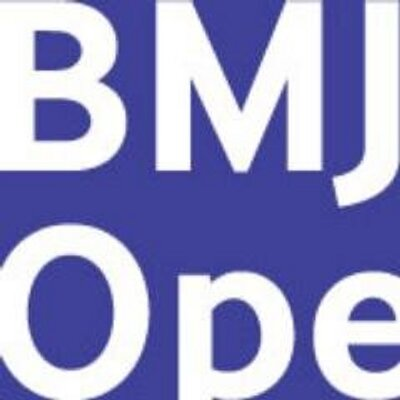内容精选
Content Selection
《英国医学杂志》主编推荐
The BMJ Editor's Choice
-

-
Assisted dying—time for a full and fair debate
时间:2015-08-20
发布:Fiona Godlee, Editor in Chief, The BMJ
分享:
On the day he had chosen to die, Henri Bataille sat on his hospital bed with his wife and children around him. “Thank you for allowing me to go the way I want to go,” he told them. As a doctor in Belgium, Bataille had often felt powerless to help his own patients who were dying in pain (doi:10.1136/bmj.h4385). When he developed bone metastases secondary to prostate cancer, he registered for a physician assisted death, legal in Belgium since 2002. His daughter Veronique, also a doctor, explains, “I think that it was because he knew exactly when he was going to go that he had four or five hours of amazing lucidity,” and he “was so much in control.”
Next month the UK will decide whether or not to legalise assisted dying. Very different to the law in Belgium, the UK Assisted Dying Bill is based closely on the law in the US state of Oregon, where assisted dying has been legal since 1997 (doi:10.1136/bmj.h4481). The bill, which The BMJ supports (doi:10.1136/bmj.g4349), would allow mentally competent adults with a terminal illness and a prognosis of less than six months the possibility of an assisted death by self administration of prescribed drugs. Patients who request an assisted death would be reviewed by two doctors and subsequently by a High Court judge. The request would be granted only if all agree that the patient has a voluntary, clear, settled, and informed wish to end their life.
The involvement of a judge, added by the House of Lords when debating the bill last year, means that vulnerable people will be adequately protected, says Jacky Davis in our Head to Head debate this week (doi:10.1136/bmj.h4437). The provisions in the bill are, she says, “far more robust than anything in place in the current confused state of affairs.” Currently people with terminal illness wishing to end their lives must travel abroad or commit suicide, which usually means dying alone without the support and presence of their families, and without safeguards, regulation, or monitoring.
Ilora Finlay is not reassured (doi:10.1136/bmj.h4437). Few GPs will be willing to undertake full assessments, she says, and the judge’s decision will be no better than a rubber stamp. She offers an alternative model. If, as advocates argue, this is a matter for society rather than medicine, let society make the decisions through the courts, bringing doctors in as expert witnesses, as is done for the withdrawal of life support. Annabel Price calls for other improvements to the current bill in her Personal View (doi:10.1136/bmj.h4461): greater clarity on how doctors would be expected to judge a patient’s competence and collection of data on the outcome of all requests, including those that are denied. These seem like reasonable suggestions worthy of debate.
Veronique Bataille is clear that the alternative to an assisted death for her father would have been more pain and no predictability. The Assisted Dying Bill was progressing through the House of Lords when it ran out of time before the general election. Given the strong and consistent public support for assisted dying and the importance and complexity of the subject, I echo Davis’s plea that the UK government now allow sufficient time for a full and fair debate.
BMJ 2015; 351 doi: http://dx.doi.org/10.1136/bmj.h4517 (Published 20 August 2015)
Cite this as: BMJ 2015;351:h4517 -

-
The AIDS epidemic and economic input impact factors in Chongqing, China, from 2006 to 2012: a spatial-temporal analysis
时间:2015-07-20
发布:admin
分享:
Abstract
Objective: To analyse the spatial-temporal clustering of the HIV/AIDS epidemic in Chongqing and to explore its association with the economic indices of AIDS prevention and treatment.
Methods: Data on the HIV/AIDS epidemic and economic indices of AIDS prevention and treatment were obtained from the annual reports of the Chongqing Municipal Center for Disease Control for 2006–2012. Spatial clustering analysis, temporal-spatial clustering analysis, and spatial regression were used to conduct statistical analysis.
Results: The annual average new HIV infection rate, incidence rate for new AIDS cases, and rate of people living with HIV in Chongqing were 5.97, 2.42 and 28.12 per 100 000, respectively, for 2006–2012. The HIV/AIDS epidemic showed a non-random spatial distribution (Moran’s I≥0.310; p<0.05). The epidemic hotspots were distributed in the 15 mid-western counties. The most likely clusters were primarily located in the central region and southwest of Chongqing and occurred in 2010–2012. The regression coefficients of the total amount of special funds allocated to AIDS and to the public awareness unit for the numbers of new HIV cases, new AIDS cases, and people living with HIV were 0.775, 0.976 and 0.816, and −0.188, −0.259 and −0.215 (p<0.002), respectively.
Conclusions: The Chongqing HIV/AIDS epidemic showed temporal-spatial clustering and was mainly clustered in the mid-western and south-western counties, showing an upward trend over time. The amount of special funds dedicated to AIDS and to the public awareness unit showed positive and negative relationships with HIV/AIDS spatial clustering, respectively.
BMJ Open 2015;5:e006669 doi:10.1136/bmjopen-2014-006669




 京公网安备 11010502034496号
京公网安备 11010502034496号